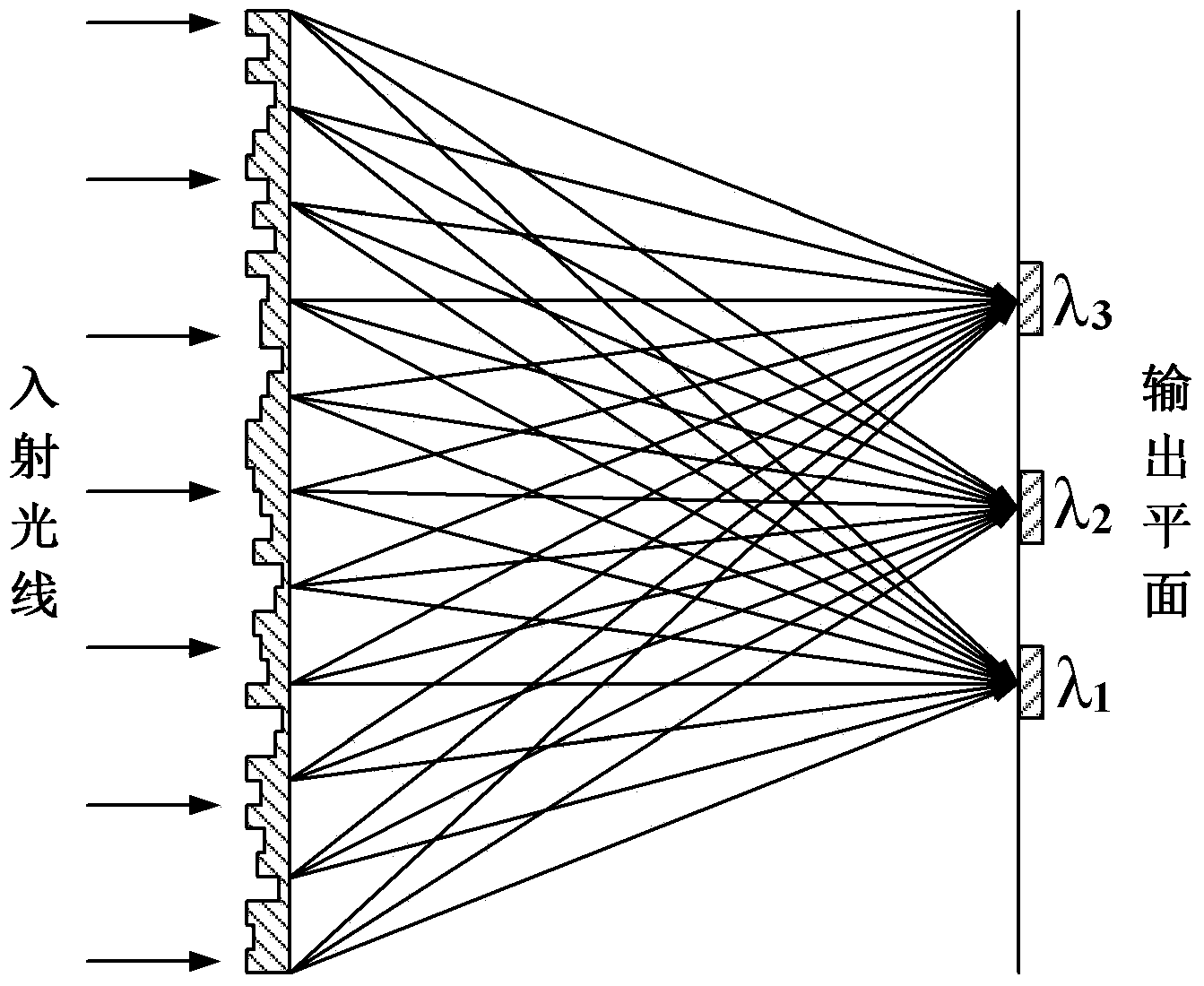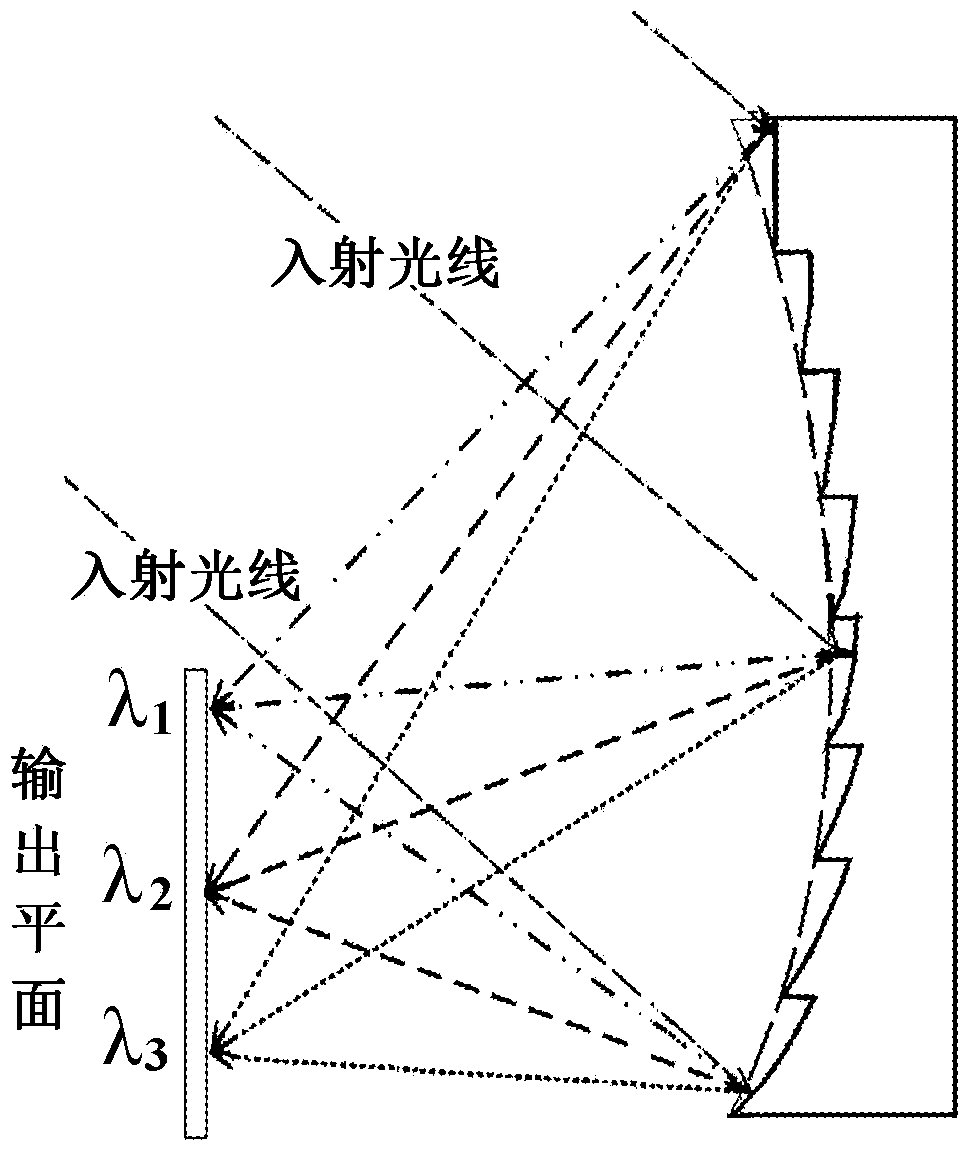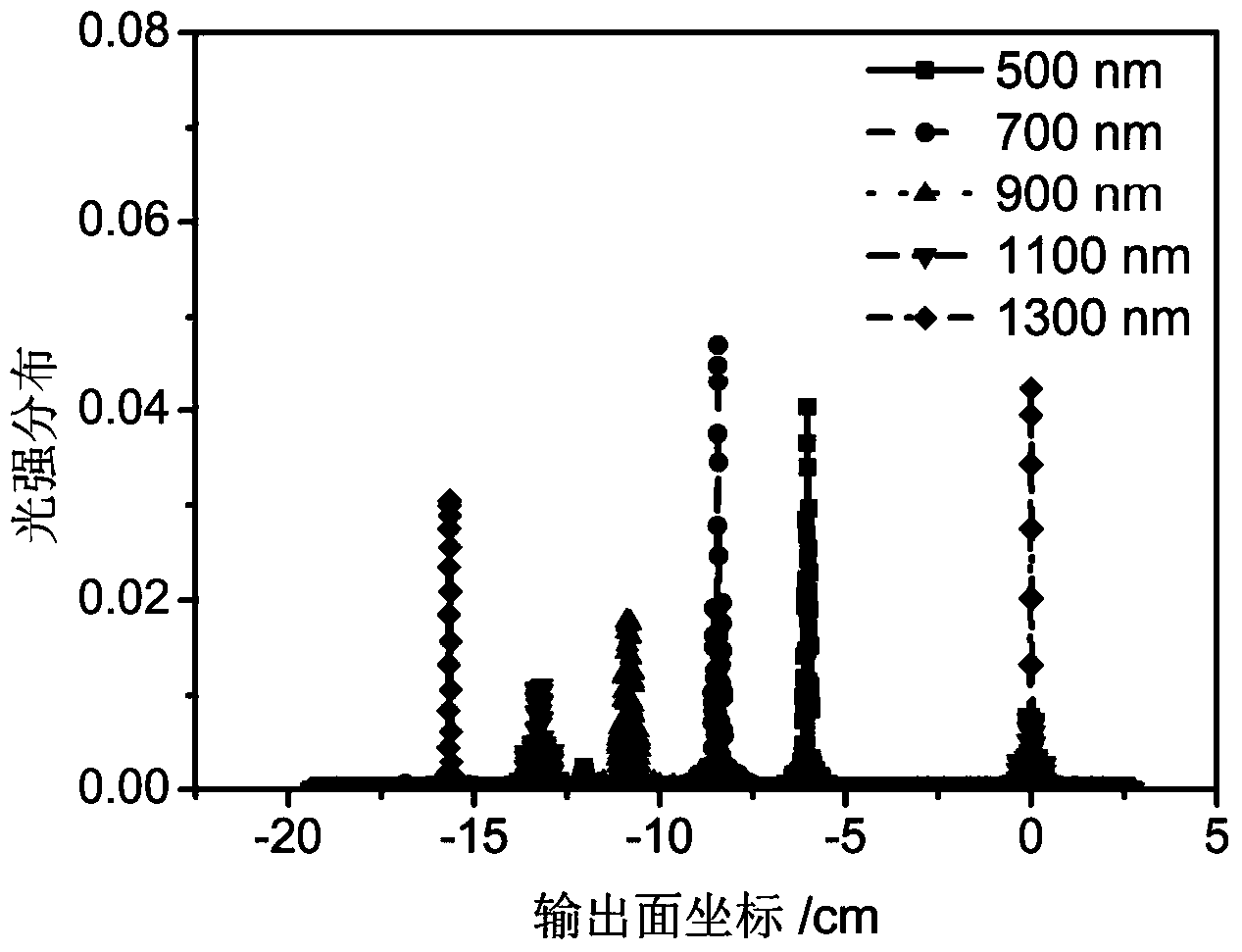Solar cell
A solar cell and sunlight technology, applied in the field of solar cells, can solve the problems of bulky optical devices, high cost of optical systems, technical difficulties, etc., achieve high photoelectric conversion efficiency, improve practical significance, and increase the effect of photoelectric conversion efficiency
- Summary
- Abstract
- Description
- Claims
- Application Information
AI Technical Summary
Problems solved by technology
Method used
Image
Examples
Embodiment Construction
[0040] Such as figure 1 with figure 2 A schematic diagram of focusing sunlight at a predetermined focus position on an output plane by using a color separation focusing optical element in the prior art is shown. It can be seen from the figure that different wavelengths (λ1 ,λ 2 ,λ 3 ) are respectively color-separated and focused to respective predetermined focus positions on the output plane, and these predetermined focus positions form monochromatic regions corresponding to different wavelengths on the output plane. In the past research work on solar cells, it is often focused on how to involve the color separation and focusing optical elements to focus the specific wavelength of sunlight on the specific focus position on the output plane, and how to select the semiconductor material cell to focus on the output plane. Efficient energy utilization of wavelengths at multiple specific focusing positions, but did not notice that there is still a certain amount of light intens...
PUM
 Login to View More
Login to View More Abstract
Description
Claims
Application Information
 Login to View More
Login to View More - R&D
- Intellectual Property
- Life Sciences
- Materials
- Tech Scout
- Unparalleled Data Quality
- Higher Quality Content
- 60% Fewer Hallucinations
Browse by: Latest US Patents, China's latest patents, Technical Efficacy Thesaurus, Application Domain, Technology Topic, Popular Technical Reports.
© 2025 PatSnap. All rights reserved.Legal|Privacy policy|Modern Slavery Act Transparency Statement|Sitemap|About US| Contact US: help@patsnap.com



